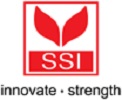Get a Project Report
Profitable Business Ideas for Startups
GLOBAL FOOD COLOURS INDUSTRY
The market for food colours is expected to develop at a CAGR of 4.7 percent. The increased demand for natural food colours, as well as evolving taste and food appeal preferences among populations around the world, are driving the food colours market. The market for food colours is expected to be driven by increased consumer awareness of clean-label products and the additional health advantages of certain natural food colours. Natural colour, synthetic colour, and food colouring are all examples of global food colourants. Natural colours’ health-promoting characteristics, combined with the organic properties of natural goods, are driving up demand for natural colours. Due to increased consumer demand for more natural products around the world, there has been a lot of interest in the creation of novel natural colourants used in the food business. Natural colours’ health-promoting effects, together with the organic properties of natural products, are increasing the attractiveness for them. The increase in demand for natural colours from various end-use sectors, such as food & drinks, bakery & confectionery, dairy products, meat & poultry, and seafood, is propelling the global food colours market forward. The use of natural sources such as carotenoids, curcumin, anthocyanin, and carmine is projected to improve as a result of this. Natural colours, which work as antioxidants and colouring agents and protect the body against cellular damage, chronic diseases, and the affects of ageing, are free of genetically modified organisms (GMOs) and allergens. The market for food colours is growing as people become more aware of the health advantages of natural colourants.
ENTREPRENEURIAL OPPORTUNITIES
The Asia Pacific and South American regions provide considerable growth potential for food colour makers. Localizing activities could reduce costs and improve access to local distribution networks, allowing profit margins to be maximised. In these areas, resources and labour are easily available at a lower cost. Multinationals are being enticed to set up Greenfield operations by the governments of China and India. To entice international investment, the Indian government has announced significant tax reductions. To entice international investment, China offers additional tax incentives in addition to the standard tax breaks. India, China, and Brazil are investing more in biotechnological research and development, as well as its use in the manufacturing of natural colouring compounds. Due to rising consumer spending power on healthy food and changing eating habits and preferences, food and beverage makers are seeing significant demand from these countries. These characteristics are creating significant opportunities for food colours in Asia Pacific and South America’s growing economies.
GLOBAL FOOD INGREDIENTS INDUSTRY
The worldwide food ingredients industry is increasing at a 6.0 percent compound annual growth rate (CAGR). With increased trade operations across numerous sectors, including the food and beverage business, globalisation is making the world a smaller place to prosper in. As a result, there has been a rapid increase in the export and import of food ingredients around the world in order to preserve product quality and extend shelf life. Rapid urbanisation and rising population density, combined with rising purchasing power, has resulted in widespread acceptance of convenience foods, resulting in increased demand for a variety of food ingredients. Consumers are growing more health concerned and demanding natural food ingredients as the number of food-borne disorders rises. Over the last decade, the number of women working has increased dramatically, resulting in increased demand for ready-to-eat items. New product development is a priority for leading producers in the global food ingredients industry.
The Global Food Flavors Industry
The global market for food tastes is developing at a CAGR of 4.8 percent. Shifting customer preferences, the introduction of many unique flavours, the expanding millennial demographic, and a rise in supplemental income among consumers are all driving the industry. The need for food flavours is continually expanding due to future new technology and unique food and beverage options. Food tastes are frequently employed to enhance the flavour of foods. Natural and synthetic tastes are the most common flavour enhancers. Perishable foods lose flavour over time after processing and preservation, necessitating the employment of flavouring ingredients to help keep the flavour. Flavors are needed in the food and beverage business for a variety of reasons, including new product creation, adding new product lines, and changing the taste of existing products. The food tastes market is growing due to a high demand for novel flavours from the food and beverage industry, as well as ongoing innovation.
Gums and Stabilizers for the Food Industry
Food Gum is a thickening and emulsion stabiliser used in icing. Its organoleptic qualities have prompted it to be used in watery foodstuffs to regulate their functional properties. Gums originating from natural sources such as seeds, trees, and sea food include carob bean gum, knojac gum, xanthan gum, Arabic gum, guar gum, and others. Furthermore, the food gum market’s gelation, viscosity, and water binding qualities broaden its application in dairy products, dressings, desserts, fruit juices, confectionary, poultry, and other industries. The usage of food gum in bakery and confectionary items, as well as dairy products, is propelling the worldwide food gums market forward. Furthermore, the global demand for fast food products such as burgers, pizza, and other similar items has increased.
The market for Food Stabilizers (Blends & Systems) is expected to develop at a CAGR of 4.0 percent during the next five years. The increased demand for healthier and natural food ingredients in the food sector is driving the growth of the food stabilisers (blends & systems) market. The increase in processed food consumption, the multi-functionality of food stabilisers, and the rise in the usage of natural ingredients in foods as a result of rising consumer awareness of a healthy diet are the main drivers of market expansion. In developed countries, the market for stabilisers as a component in bread items, drinks, and convenience foods is likely to expand.
INDIAN FOOD COLORANTS MARKET
The market for food colourants in India is expected to grow at a CAGR of 5.3 percent. Small-scale food companies, such as confectionery, snacks and sweets, and beverage, as well as some multinational industries, dominate the food colourants market in the country. India’s Food Safety and Standard Authority oversees the country’s food colourant sector. Currently, the regulatory body only approves the use of eight synthetic food colourants in amounts that do not exceed the ADI value, allowing food manufacturers to utilise these chemicals in limited quantities in their products. The market for food colourants in India is dominated by synthetic colourants, followed by natural colourants. The natural colour market is expanding at a significantly higher rate as customer demand grows. The cheap availability of raw materials, such as fruits and vegetables, drives the Indian food colourants market. Due to the availability of a large production region, India produces a lot of fruits and vegetables. The country produces a lot of orange colours like achiote, saffron, and carrots. Consumer demand for appealing food has risen as a result of changing lifestyles and more economic stability, resulting in a rise in the country’s food colourants sector. As a result, a slew of new local firms are entering the market in search of a foothold.
TOP PLAYERS WORLDWIDE
- Archer Daniels Midland Company.
- Hansen Holding A / S
- D. Williamson
- Dohler Group.
- Fiorio Colori S.R.L.
- Kalsec Inc
- Kancor
- Naturex S.A.
- Sensient Technologies Corporation.
- METRIX PHARMA CHEM
- Narmada Food Colours Pvt.Ltd
- Vinayak Ingredients (India) Private Limited






















